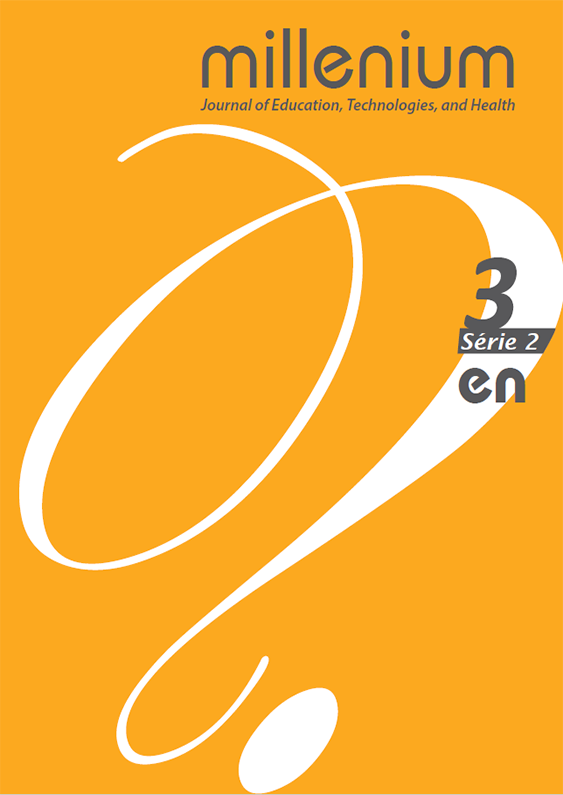Prevention of Skin Tears in the Dependent Older Person: Contribution of the Humanitude Care Methodology
DOI:
https://doi.org/10.29352/mill0203.05.00115Keywords:
Humanitude, nursing care, elderly people, agitation, skin tearsAbstract
Introduction: Aging is characterized by a decline in physical and cognitive functioning, increasing the older person’s vulnerability to dependence. The age factor and the associated physiological skin changes contribute to the occurrence of skin tears. This type of wounds is common in older people and often results from care delivery, hence the importance of caring with Humanitude and avoiding the use of force during interventions.
Objectives: This study aims to identify and analyze the current scientific evidence on the contribution of the Humanitude care methodology toward reducing the agitation and preventing skin tears in dependent older people.
Methods: Integrative literature review of articles published between 2011 and 2016, available in full text and written in Portuguese and English, in the EBSCOhost and Google Scholar databases.
Results: Of a total of 75 articles, five articles were obtained after applying the inclusion and exclusion criteria.
Conclusions: The studies showed that the application of the Humanitude care methodology, by using gentle caring techniques, is particularly effective in dependent older people by reducing their pathological agitation behaviors and opposition to treatment/refusal of care and preventing shearing, friction, and bruising.
Downloads
References
Brillhart B. (2005). Pressure sore and skin tear prevention and treatment during a 10-month program. Rehabil Nurs 2005;30(3):85-91.
Delmas C. (2013). Are difficulties in caring for patients with Alzheimer’s disease becoming an opportunity to prescribe well-being with the Gineste-Marescotti® care methodology? IPRIM Institut pour la recherche et l’information sur la méthodologie de soin Gineste-Marescotti®. France. Recuperado de http://www.igm-formation.net/images/stories/pdf/poster_iprim_anglais_2013-eugms.pdf.
Faria, H., Paiva, A. & Marques, P. (2012). A restrição física da mobilidade: Estudo sobre os aspetos ligados à sua utilização com fins terapêuticos. Revista de Enfermagem Referência. 3(6). 7-16. Recuperado de: http://www.scielo.mec.pt/pdf/ref/vserIIIn6/serIIIn6a01.pdf.
Firmino, H., Nogueira, V., Neves, S., & Lagarto, L. (2014). Psicopatologia das pessoas mais velhas. In M.T. Veríssimo (Eds.), Geriatria Fundamental: Saber e prática (1ª ed., pp. 143-157). Lisboa: LIDEL.
Fonseca, E., Penaforte, M., & Martins, M. (2015). Cuidados de higiene – banho: significados e perspetivas dos enfermeiros. Revista de Enfermagem Referência. 5(4). 37-45. Recuperado de http://www.scielo.mec.pt/pdf/ref/vserIVn5/serIVn5a05.pdf.
García-Fernández, FP; Soldevilla-Ágreda, JJ; Pancorbo-Hidalgo, PL; Verdú Soriano, J; López- Casanova, P; Rodríguez-Palma, M. (2014). Clasificación-categorización de las lesiones relacionadas con la dependencia. Serie Documentos Técnicos GNEAUPP nº II. Grupo Nacional para el Estudio y Asesoramiento en Úlceras por Presión y Heridas Crónicas. Logroño.
Gineste, Y. & Pellissier, J. (2008). Humanitude: Cuidar e compreender a velhice. Lisboa, Portugal: Instituto Piaget.
Honda, M., Ito, M., Ishikawa, S., Takebayashi, Y. & Tierney, L. (2016). Reduction of behavioral psychological symptoms of dementia by multimodal comprehensive care for vulnerable geriatric patients in an acute care hospital: A case series. Hindawi Publishing Corporation. doi: 10.1155/2016/4813196.
LeBlanc K, Baranoski S. (2011). Skin tears: state of the science: consensus statements for the prevention, prediction, assessment, and treatment of skin tears. Adv Skin Wound Care. 2011;24(9):2-15.
Organização Mundial de Saúde (2016). Demência. Recuperado de http://www.who.int/mediacentre/factsheets/fs362/es/.
Penaforte, M. (2011). O autocuidado higiene: Conhecimento científico e ritual (Tese de doutoramento). Universidade de Lisboa, Portugal. Recuperado de http://repositorio.ul.pt/bitstream/10451/7342/1/ulsd063588_td_Maria_Penaforte.pdf.
Phaneuf, M. (2010). O envelhecimento perturbado: A doença de Alzheimer, 2.ªed. Loures, Portugal: Lusodidacta.
Pinto, J. & Queirós, P. (2015). Comunicação paradoxal em contexto hospitalar: reflexão sobre as dificuldades comunicacionais entre profissionais de saúde e doentes. E-Boock: VI Congresso Internacional da ASPESM. A Pessoa, a família, a Comunidade e a Saúde Mental, Açores, S. Miguel, p. 116-227.
Ramalho, A. (2005). Manual para redacção de estudos e projetos de revisão sistemática com e sem metanálise: Estrutura funções e utilização na investigação em enfermagem. Coimbra, Portugal: Formasau-Formação e Saúde. ISBN 972-8485-54-9.
Salgueiro, N. (2014). Humanitude: um imperativo do nosso tempo: introdução à metodologia de cuidado Gineste-Marescotti. Coimbra, Portugal: IGM Portugal-Humanidade.
Santana, I. & Duro, D. (2014). Envelhecimento cerebral e demência. In M.T. Veríssimo (Eds.), Geriatria Fundamental: Saber e prática (pp. 178-157). Lisboa, Portugal: LIDEL, 2014.
Santos ÉI, Gomes AMT, Barreto EAS, Ramos RS. (2013). Evidências científicas sobre fatores de risco e sistemas de classificação das skin tears. Rev Enferm Atual In Derme. 2013;64:16-21.
Santos, Érick Igor (2014). Skin tear treatment and prevention by nurses: an integrative literature review. Rev. Gaúcha Enferm. [online]. 2014, vol.35, n.2, pp.142-149. ISSN 1983-1447. http://dx.doi.org/10.1590/1983-1447.2014.02.45178.
Sarroeira, C. (2011). Cuidados de higiene: da tarefa ao cuidado. Uma reflexão, Revista de Enfermagem Referência. 3(4), 119. ISSN 0874.0283
Downloads
Published
How to Cite
Issue
Section
License
Authors who submit proposals for this journal agree to the following terms:
a) Articles are published under the Licença Creative Commons (CC BY 4.0), in full open-access, without any cost or fees of any kind to the author or the reader;
b) The authors retain copyright and grant the journal right of first publication, allowing the free sharing of work, provided it is correctly attributed the authorship and initial publication in this journal;
c) The authors are permitted to take on additional contracts separately for non-exclusive distribution of the version of the work published in this journal (eg, post it to an institutional repository or as a book), with an acknowledgment of its initial publication in this journal;
d) Authors are permitted and encouraged to publish and distribute their work online (eg, in institutional repositories or on their website) as it can lead to productive exchanges, as well as increase the impact and citation of published work
Documents required for submission
Article template (Editable format)















